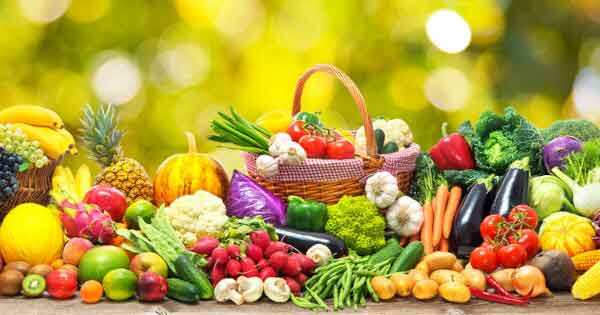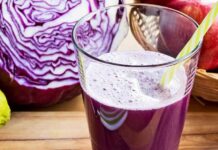
Food is life and this couldn’t be truer elsewhere than in disease prevention. An estimated 42% of all cancers, for one, may be prevented by diet and lifestyle alone.[i] The numbers are likely to be even higher for some types of cancer.
There’s increasing awareness of the power of food and herbs in preventing and helping to heal cancer. GreenMedInfo.com houses some of the biggest open-access databases on this topic, providing more than 10,000 studies on the value of nearly 1,000 natural substances for cancer. Following are some commonly available foods that are natural chemopreventive agents.
Foods With Anticancer Properties
-
Fruits
The consumption of fruit and vegetables has been linked to a reduced risk of cancer. According to a report from the 2007 World Cancer Research Fund/American Institute for Cancer Research, foods containing vitamin C probably protect against esophageal cancer, with fruits in particular helping against gastric cancer.[ii]
Similar findings were observed in a 2016 study that saw “a marginally decreased risk” of esophageal cancer, squamous cell carcinoma and esophageal adenocarcinoma, along with a non-significant risk reduction in gastric cardia cancer, with each 100 grams (g) a day increase of citrus fruit intake. Consuming citrus fruits has also been tied to decreased bladder cancer risk.[iii]
Results from a 2019 study offered strong evidence that higher fruit intake is negatively associated with the risk of lung cancer among both current and former smokers, while vegetable intake is linked to a significantly reduced risk of lung cancer in current smokers.[iv] A meta-analysis also showed a correlation between fruit and vegetable intake and a reduced risk of oral cancer.[v]
-
Cruciferous Vegetables
The family of vegetables that includes cauliflower, cabbage, kale, broccoli and Brussels sprouts, is renowned for its outstanding action against cancer. Cruciferous veggies have been found to have anticancer properties, with research showing:
- A high intake was inversely associated with renal cell carcinoma risk among Americans, based on a meta-analysis[vi]
- A diet that includes cruciferous vegetables could be a crucial modifiable risk factor for ovarian cancer, the fifth leading cause of cancer-related deaths among women[vii]
- Consuming cruciferous vegetables was strongly associated with a reduced risk of prostate cancer progression[viii]
- Consuming cruciferous vegetables may reduce lung cancer risk among men who currently don’t smoke[ix]
-
Turmeric
A yellow substance from the root of the plant Curcuma longa, curcumin is the main active ingredient in the spice turmeric with strong anti-inflammatory and antioxidant properties.[x] Due to the role of oxidative damage in a range of conditions such as cancer, atherosclerosis and neurodegenerative diseases, curcumin is believed to play an important role.
Research from 2001 showed that curcumin is safe in humans at up to 8,000 milligrams (mg) a day when taken orally for three months, providing chemopreventive properties.[xi] Curcumin combined with turmerones, the essential oil components of turmeric, may be a powerful intervention to prevent inflammation-associated colon carcinogenesis in animal models.[xii]
” … TUR [turmerones, a bioactive compound in turmeric] is a novel candidate for colon cancer prevention. Furthermore, we consider that its use in combination with CUR [curcumin] may become a powerful method for prevention of inflammation-associated colon carcinogenesis,” researchers wrote in a study published in Biofactors.[xiii]
-
Coffee
It’s not only a morning pick-me-up but also a powerhouse against various types of cancer. A meta-analysis of prospective observational studies showed a link between coffee intake and a reduced risk of oral, pharynx, liver, colon, prostate and endometrial cancers, as well as melanoma.[xiv]
There is also mounting evidence of the cancer-fighting properties of coffee against liver cancer.[xv] A prospective cohort study involving 30,824 subjects echoed the finding in its probe of whether coffee, green tea and caffeine are associated with liver cancer risk, showing that coffee consumption significantly reduced the risk, while the same association wasn’t observed for caffeine intake.[xvi]
A separate study confirmed the inverse relationship between coffee intake and hepatocellular carcinoma risk, with the protective effect detected in healthy populations as well as those with chronic liver diseases.[xvii] In addition, researchers found that coffee consumption may prevent liver cirrhosis from developing.
-
Green Tea
Green tea, another popular beverage around the world, scores high in chemoprevention. Among Chinese women, researchers concluded that higher intake of mushrooms slashed breast cancer risk in pre- and post-menopausal women and observed an additional reduced risk from the joint effect of mushrooms and green tea.[xviii]
In a randomized clinical trial of brewed green and black tea in prostate cancer patients prior to prostatectomy, green tea induced changes in inflammation and systemic oxidation, and the uptake of its polyphenols in prostate tissue displayed a potential role worthy of further research in preventing and treating prostate cancer.[xix]
In a population-based study, women who reported drinking at least one cup of green tea a day had a 54% reduction in ovarian cancer risk.[xx] Increased green tea consumption might even prove helpful in reducing the risk of colorectal cancer in those with unhealthy lifestyles.[xxi]
References:
[i] CA: A Cancer Journal for Clinicians November 21, 2017 https://acsjournals.onlinelibrary.wiley.com/doi/full/10.3322/caac.21440
[ii] Vingeliene S et al “An update of the WCRF/AICR systematic literature review on esophageal and gastric cancers and citrus fruits intake” Cancer Causes Control. 2016 Jul ;27(7):837-51. Epub 2016 May 6.
[iii] Liang S et al “Citrus fruit intake and bladder cancer risk: a meta-analysis of observational studies” Int J Food Sci Nutr. 2014 Nov ;65(7):893-8. Epub 2014 Jun 16.
[iv] Wang C et al “The Associations of Fruit and Vegetable Intake with Lung Cancer Risk in Participants with Different Smoking Status: A Meta-Analysis of Prospective Cohort Studies” Nutrients. 2019 Aug 2 ;11(8). Epub 2019 Aug 2.
[v] Pavia M et al “Association between fruit and vegetable consumption and oral cancer: a meta-analysis of observational studies” Am J Clin Nutr. 2006 May ;83(5):1126-34.
[vi] Zhao J et al “Cruciferous vegetables intake is associated with lower risk of renal cell carcinoma: evidence from a meta-analysis of observational studies” PLoS One. 2013 ;8(10):e75732. Epub 2013 Oct 28.
[vii] McManus H et al “Usual Cruciferous Vegetable Consumption and Ovarian Cancer: A Case-Control Study” Nutr Cancer. 2018 Apr 25:1-6. Epub 2018 Apr 25.
[viii] Richman E et al “Vegetable and fruit intake after diagnosis and risk of prostate cancer progression” Int J Cancer. 2012 Jul 1 ;131(1):201-10. Epub 2011 Aug 30.
[ix] Mori N et al “Cruciferous Vegetable Intake Is Inversely Associated with Lung Cancer Risk among Current Nonsmoking Men in the Japan Public Health Center Study” J Nutr. 2017 Apr 5. Epub 2017 Apr 5.
[x] Menon V et al “Antioxidant and anti-inflammatory properties of curcumin” Adv Exp Med Biol. 2007;595:105-25.
[xi] Cheng A et al “Phase I clinical trial of curcumin, a chemopreventive agent, in patients with high-risk or pre-malignant lesions” Anticancer Res. 2001 Jul-Aug;21(4B):2895-900.
[xii] Murakami A et al “Curcumin combined with turmerones, essential oil components of turmeric, abolishes inflammation-associated mouse colon carcinogenesis” Biofactors. 2012 Dec 11. Epub 2012 Dec 11.
[xiii] Biofactors. Mar-Apr 2013;39(2):221-32. doi: 10.1002/biof.1054. Epub 2012 Dec 11. https://pubmed.ncbi.nlm.nih.gov/23233214/
[xiv] Wang A et al “Coffee and cancer risk: A meta-analysis of prospective observational studies” Sci Rep. 2016 Sep 26 ;6:33711. Epub 2016 Sep 26.
[xv] Larsson S et al “Coffee consumption and risk of liver cancer: a meta-analysis” Gastroenterology. 2007 May ;132(5):1740-5. Epub 2007 Mar 24.
[xvi] Tamura T et al “Coffee, Green Tea, and Caffeine Intake and Liver Cancer Risk: A Prospective Cohort Study” Nutr Cancer. 2018 Nov-Dec;70(8):1210-1216. Epub 2018 Nov 20.
[xvii] Bai K et al “Coffee consumption and risk of hepatocellular carcinoma: a meta-analysis of eleven epidemiological studies” Onco Targets Ther. 2016 ;9:4369-75. Epub 2016 Jul 19.
[xviii] Zhang M et al “Dietary intakes of mushrooms and green tea combine to reduce the risk of breast cancer in Chinese women” Int J Cancer. 2009 Mar 15;124(6):1404-8.
[xix] Henning S et al “Randomized clinical trial of brewed green and black tea in men with prostate cancer prior to prostatectomy” Prostate. 2015 Apr 1 ;75(5):550-9. Epub 2014 Dec 24.
[xx] Yoon Ju Song et al “Coffee, tea, colas, and risk of epithelial ovarian cancer” Cancer Epidemiol Biomarkers Prev. 2008 Mar;17(3):712-6.
[xxi] Kim H et al “Protective Effect of Green Tea Consumption on Colorectal Cancer Varies by Lifestyle Factors” Nutrients. 2019 Nov 1 ;11(11). Epub 2019 Nov 1.
Important Notice: This article was originally published at https://greenmedinfo.com by GreenMedInfo Research Group where all credits are due.
Disclaimer
The watching, interacting, and participation of any kind with anything on this page does not constitute or initiate a doctor-patient relationship with Dr. Farrah™. None of the statements here have been evaluated by the Food and Drug Administration (FDA). The products of Dr. Farrah™ are not intended to diagnose, treat, cure, or prevent any disease. The information being provided should only be considered for education and entertainment purposes only. If you feel that anything you see or hear may be of value to you on this page or on any other medium of any kind associated with, showing, or quoting anything relating to Dr. Farrah™ in any way at any time, you are encouraged to and agree to consult with a licensed healthcare professional in your area to discuss it. If you feel that you’re having a healthcare emergency, seek medical attention immediately. The views expressed here are simply either the views and opinions of Dr. Farrah™ or others appearing and are protected under the first amendment.
Dr. Farrah™ is a highly experienced Licensed Medical Doctor certified in evidence-based clinical nutrition, not some enthusiast, formulator, or medium promoting the wild and unrestrained use of nutrition products for health issues without clinical experience and scientific evidence of therapeutic benefit. Dr. Farrah™ has personally and keenly studied everything she recommends, and more importantly, she’s closely observed the reactions and results in a clinical setting countless times over the course of her career involving the treatment of over 150,000 patients.
Dr. Farrah™ promotes evidence-based natural approaches to health, which means integrating her individual scientific and clinical expertise with the best available external clinical evidence from systematic research. By individual clinical expertise, I refer to the proficiency and judgment that individual clinicians acquire through clinical experience and clinical practice.
Dr. Farrah™ does not make any representation or warranties with respect to the accuracy, applicability, fitness, or completeness of any multimedia content provided. Dr. Farrah™ does not warrant the performance, effectiveness, or applicability of any sites listed, linked, or referenced to, in, or by any multimedia content.
To be clear, the multimedia content is not intended to be a substitute for professional medical advice, diagnosis, or treatment. Always seek the advice of your physician or other qualified health providers with any questions you may have regarding a medical condition. Never disregard professional medical advice or delay in seeking it because of something you have read or seen in any website, video, image, or media of any kind. Dr. Farrah™ hereby disclaims any and all liability to any party for any direct, indirect, implied, punitive, special, incidental, or other consequential damages arising directly or indirectly from any use of the content, which is provided as is, and without warranties.








